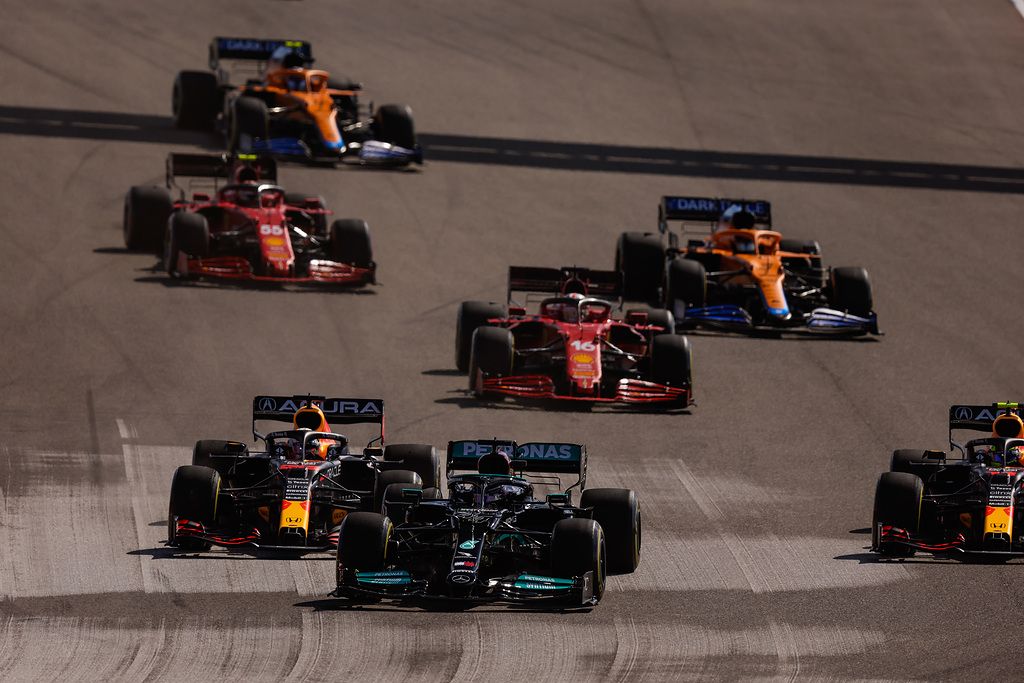FIA weighs in on the engine penalty topic where it feels the current system is on parity for all, with Toto Wolff and Andreas Seidl agreeing that there is no better solution.
The engine penalty discussion is back on amid teams having been forced to take more than three elements of the power unit. While the first extra one attracts a 10-place grid penalty in terms of Internal Combustion Engine, the subsequent ones cost 5-places.
This did cause some confusion as not many were aware of the said rule. The last time when so many engine penalties were applied were at the time of Honda with McLaren, when it became difficult every race with the amount of penalties taken.
While Honda isn’t the same now, interestingly, Mercedes is seeing troubles with their power units this year. It is still not as bad as it was for the Japanese manufacturer, but nevertheless, the topic returned into the forum and if it needs simplification.
FIA Race Director Masi, though, clarified that there has been no internal discussion among teams to change the penalty system as of now. “No, there hasn’t, the part of it is that it is for every team which is racing to the exactly the same regulations, they all know from the start of the year how many power units and how many gearboxes and other various resources they are going to have,” he said to written media.
“Everyone is on the same level of understanding of what they need to do. Like any team particularly in the championship fight but anyone is going to try to get as much of a competitive advantage that you need with a power unit updates, aerodynamic updates, whatever it might be,” summed up Masi.
The point of discussion was if teams would use it strategically, whether for own good or to help their team’s title contending driver, but Masi dismissed that notion. “No, but they only chose to change the one element and that is part of what that team has chosen to do,” he said. “If they chose to do like Alpine did with Fernando and put absolutely everything in it which was quite clear and it exceeded their limit, it was a back of the grid just like George and Sebastian.”
Masi talked about Alonso because Alpine changed his system, not because of any issues, but as a strategy to have better performance with fresh parts. When pressed on to state that teams can still use it as a strategy, the FIA Race Director kind of agreed.
But he added it is on the teams anyways and the rule has been there from before his arrival. “I think we’ve seen it depends on each team’s strategy, reliability, what they are playing with and what they are doing,” said Masi. “That is a choice that they all make. I wasn’t around in the role when that rule was there but I remember the old power unit penalty system when I can recall watching on TV it would be something like 60-place grid penalties and all of the rest of it.
“That was all tied up accordingly on that basis so we need to remember that the regulations we have in place regarding power units have been there for a number of years now, have been consistent and all of those are developed with all of the teams, the FIA and F1. So it is not just this is what it is, it is collectively developed and agreed upon before it is implemented,” summed up Masi.
When the question was thrown to Mercedes F1 chief Wolff, whose team is at the receiving end this year. He felt that he doesn’t any other solution to change the system and so, he doesn’t know what will be the best way to go forward to penalise.
“I think the penalty system on power units is pretty robust,” said Wolff to written media. “Because what we need to avoid is that we are building power units in a way that they perform at peak performance for only a few races. And if you change regulations, and you say okay, there is no grid penalty for the driver, but just constructor points, it will still mean that teams, if you’re in a fight for a driver championship, will just throw engines at that car.
“I think if we come up with good solutions definitely it is worth looking at because I agree that it’s confusing for the new fans why, out of the driver’s responsibility, an engine penalty puts him at the back of the grid, or 10 or five places away. And that’s clearly not great, but I haven’t got the solutions,” summed up Wolff.
At the same time, a customer team’s opinion was similar where they felt the current system is the best they can have as there is no better solution to it. “I obviously get the point that it is not ideal having all these penalties,” said McLaren F1 chief Seidl to media including FormulaRapida.net.
“But to be honest, I do not really see a straightforward solution to that because for example if you will decide let’s go to four engines instead of three. We will end up all with five engines, because we would just crank up the engines. In the end, it just shows that all the manufacturers teams are pushing each other so hard that we all push the technology we’re using to the absolute limit or beyond and that’s what ends then in issues or problems. So we simply have to accept that at the moment, and get on with it.”
Here’s Mattia Binotto not interested in Mercedes’ suspension topic
Here’s Toto Wolff on Mercedes’ engine issues

